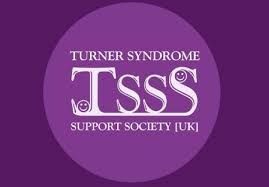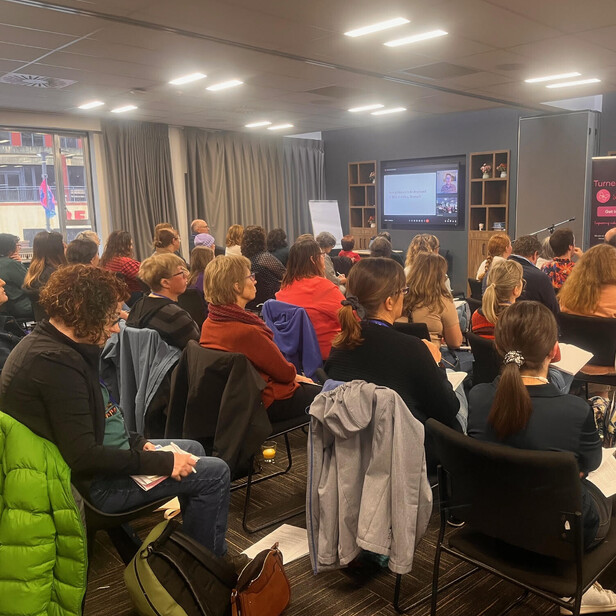Thank you to our friends at Turner Syndrome Support Society UK for producing this excellent video

What is Turner Syndrome?
Turner Syndrome only affects females. It occurs in approximately one in 2000 live female births. Turner Syndrome occurs when one of the two X chromosomes normally found in females is completely or partially missing. A chromosome is a strand of DNA that exists in every cell in your body. Sadly, the majority of babies (approx. 95%) with Turner Syndrome are miscarried or stillborn.
When an X chromosome is completely missing this is referred to as Classical Turner Syndrome. There are a number of physical and medical features which may be present Sometimes there may be abnormalities in the X chromosome in only some cells in the body. This is referred to as Mosaic Turner Syndrome and there may be few or no symptoms and fertility may not be affected.
Regular health checks and treatment will be necessary throughout life, but the majority of girls and women with Turner Syndrome lead normal, healthy lives.
The most common symptoms are:
Short stature Children with Turner Syndrome often are of normal height for the first three years but then have a lower than average growth rate. At puberty they do not have the normal growth spurt.
Non-functioning ovaries Normally a girl’s ovaries begin to produce the sex hormones oestrogen and progesterone at puberty. This does not happen in the majority of girls with Turner Syndrome so they do not start their periods or develop breasts without hormone treatment. Even though many women have non functioning ovaries and are infertile, their vagina and womb are totally normal.
Other Symptoms of Turner Syndrome may include
An especially wide neck (webbed neck) and a low or indistinct hairline
Low set ears
Puffy hands and feet
Broad chest and widely spaced nipples
Arms that turn out slightly at the elbow
A heart murmur, sometimes associated with narrowing of the aorta (blood vessel in the heart)
Many small dark birthmarks
Minor symptoms such as small spoon-shaped nails and short fourth finger or toe
A tendency to develop high blood pressure
Middle ear infection and ‘glue ear’. This can lead to hearing loss in adults in some cases
Minor eye problems that are corrected by glasses and squints are fairly common
Scoliosis (deformity of the spine) in adolescence (approx. 10%)
Under-active thyroid gland in adolescence (approx. 10%)
Older or overweight women are slightly more at risk of developing diabetes
Osteoporosis can develop due to lack of oestrogen
Girls with Turner Syndrome are usually of normal intelligence with good verbal skills and reading skills. Some girls however have problems with maths, memory skills and fine finger movements.
How is Turner Syndrome diagnosed?
After birth, diagnosis may be suspected by the presence of a number of typical physical features. Many girls are diagnosed in early childhood when a slow growth rate and other features are identified.
Diagnosis sometimes takes place later when puberty does not occur.
Sometimes diagnosis is made at birth because of heart problems, an unusually wide neck or swelling of the hands and feet.
Diagnosis after birth is confirmed by a blood test. It may be suspected while the child is in the womb, it can be picked up at the nuchal scan as part of the 1st trimester screening. This may show a large fluid filled area in the nape of the baby’s neck. This diagnosis would be confirmed by chorionic villus sampling or amniocentesis.
Ongoing treatment and management
During childhood and adolescence girls will visit a pediatric endocrinologist (a specialist in childhood conditions of the hormones and metabolism) at regular intervals. Many girls have injections of growth hormone; these should start as soon as the specialist recommends to help prevent short stature as an adult. This should continue until growth is complete. There are many reasons to use growth hormones including bone strength. There is also the possible use of an anabolic steroid to promote growth.
Estrogen replacement therapy is usually started at the time of normal puberty, around 12 years, with a low but increasing dose, breast development will then commence. Estrogen and progesterone are given a little later to induce a monthly ‘period’, which is necessary to allow shedding of the lining of the womb and keep it healthy. Estrogen is also important to prevent osteoporosis. Babies born with a heart murmur or narrowing of the aorta occasionally need surgery to correct the problem.
An expert cardiologist (heart specialist) will assess and follow up any treatment necessary. The management of middle ear infection is vital and needs to be treated quickly to avoid possible deafness.
A referral to an ENT (ear, nose and throat) specialist may be necessary. High blood pressure is quite common in women with Turner Syndrome and should be checked regularly and if necessary treated.
There is also a slightly higher risk of having an under active thyroid or having diabetes and this too should be regularly checked and treated if necessary. Regular health checks are very important. Special clinics are available in some areas, with access to a variety of specialists. Early preventative care and treatment is very important. Almost all women are infertile, but pregnancy with donor embryos may be possible. With appropriate medical treatment and support a woman with Turner Syndrome can lead a normal healthy and happy life.
The international guidelines for treatment can be located in our Resources section.





